Pallet Inverter Safety Tips for Brazil Plants Facing Automation in Busy Meatpacking and Pharma Zones
Your meatpacking or pharmaceutical plant in Brazil is growing fast. That's great news. But it also means your production floor is getting busier and more crowded. You're trying to move products faster, but manual pallet handling is slow and creates a huge risk for worker injuries. Every time an employee manually re-stacks a heavy load, you worry about back injuries, strained muscles, and the high costs of worker compensation claims. A single accident can halt your entire production line, damage a high-value batch of pharmaceuticals, or cause a contamination event in your food processing area. You know automation is the answer, but introducing a powerful machine like a pallet inverter into a busy zone creates a new set of safety concerns.
The safest way to use a pallet inverter in busy Brazilian meatpacking and pharma zones is to combine three key elements. First, select a machine with specific safety features like full perimeter fencing, interlocked access gates, and light curtains. Second, implement a comprehensive operator training program that is compliant with Brazil's NR-12 standards. Third, design the workspace around the machine to ensure clear, safe zones for both operators and pedestrian traffic, preventing accidental entry into the machine's operational area.
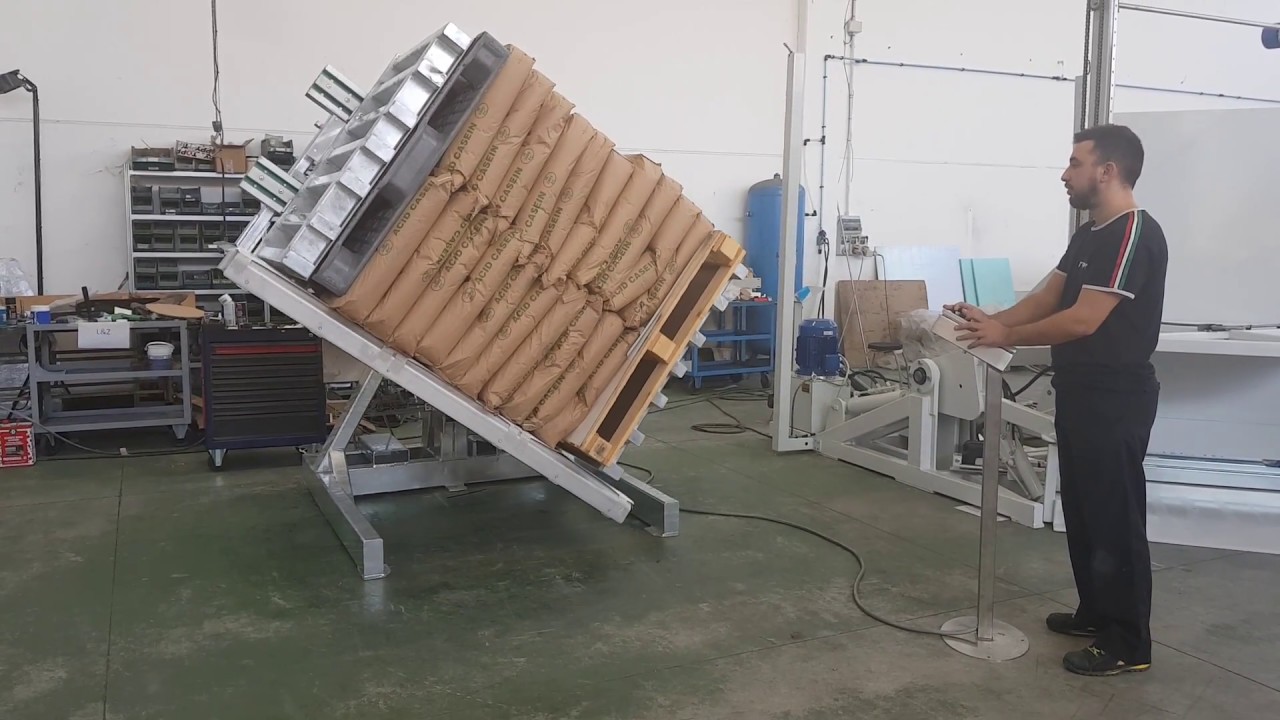
I’ve spent my entire career in the packaging machine industry, from my early days as an engineer to building my own factory. I've helped countless clients, just like you, navigate the challenges of automation. I understand the pressure you're under. You need to increase output while guaranteeing the safety of your people and your product. A pallet inverter is an incredible tool for efficiency, but only if it's implemented correctly. Let’s break down the essential safety tips that I have seen make the difference between a successful automation project and a costly failure.
How Can Proper Operator Training Drastically Reduce Pallet Inverter Accidents?
You made a significant investment in a new pallet inverter. You expect it to boost productivity and improve safety. But you notice your team is hesitant to use it. Or worse, they develop risky shortcuts to get the job done faster, bypassing the very safety features you paid for. This is a common and dangerous problem. An untrained operator can easily turn a state-of-the-art machine into a major liability. The machine is only as safe as the person running it. An accident caused by operator error can lead to severe injuries, equipment damage, and production downtime, wiping out any potential ROI.
Proper operator training is the single most effective way to reduce pallet inverter accidents. It transforms a worker from a simple button-pusher into a competent and safety-conscious operator. This training must cover the machine's specific functions, load capacity limits, pre-operational safety checks, and emergency stop procedures. When operators understand the "why" behind the safety rules, they are far more likely to follow them, creating a culture of safety that protects your entire team.
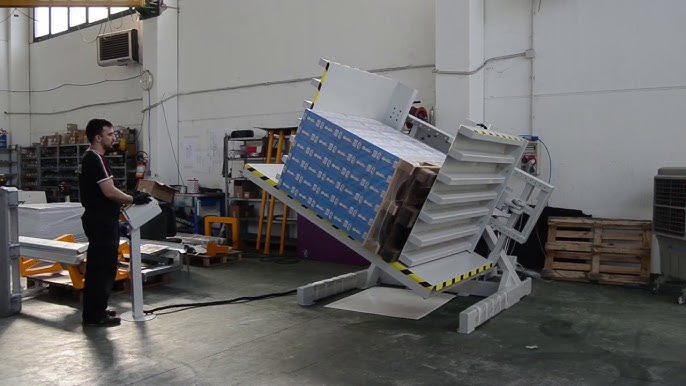
In my experience, a machine is just a tool. The real safety system is the person who operates it. A training program that only covers the 'start' and 'stop' buttons is not enough. It creates a false sense of security. A deep and continuous training plan is essential, especially in a country like Brazil with strict regulations like NR-12. This regulation requires documented proof that only qualified and authorized personnel operate machinery. Your training program is your first line of defense, both for safety and for compliance. Let's explore what a truly effective program looks like.
The Core Components of an Effective Training Program
A complete training program must be more than a quick demonstration. It needs to build deep understanding and muscle memory. I always advise my clients to structure their training in three parts. First is classroom learning. Here, operators study the machine's manual, learn about its technical specifications, and, most importantly, review the risk assessment for the machine. They must understand the potential hazards, like pinch points or crush zones, before they ever touch the equipment.
The second part is supervised, hands-on practice. An experienced trainer should guide the new operator through every function of the machine using non-essential loads. This includes loading and unloading, starting and stopping a cycle, and using the control panel. This is where they learn the feel of the machine and the rhythm of its operation. The final part is practicing emergency scenarios. What do they do if the machine stops mid-cycle? Where are all the emergency stop buttons? How do they safely power down and lock out the machine for maintenance? These drills ensure that in a real emergency, operators react correctly and without panic.
Beyond the Basics: Building a Safety Culture
Training should not be a one-time event. A certificate hanging on the wall means nothing if the knowledge is forgotten. You need to build a lasting culture of safety. This starts with regular refresher courses, perhaps annually or whenever there is a near-miss incident. A near-miss is a valuable learning opportunity. Discuss it with the team. What went wrong? How can we prevent it from happening again?
I also strongly recommend a formal certification process. Operators must pass both a written and a practical test to become certified. This adds a level of seriousness and accountability. It also makes it clear who is authorized to use the machine, which is a key requirement of NR-12. This system ensures that expertise is maintained and that safety remains the top priority on the production floor, day after day.
Training Checklist for a Pallet Inverter
| Training Module | Method | Key Topics Covered | Frequency | Responsibility |
|---|---|---|---|---|
| Initial Certification | Classroom & Hands-on | Machine controls, load limits, safety features, emergency stops, NR-12 basics. | Pre-operation | Supervisor/Supplier |
| Emergency Drills | Practical Simulation | E-stop activation, power loss recovery, manual override procedures. | Quarterly | Safety Officer |
| Refresher Course | Classroom & Practical | Review of procedures, discussion of near-misses, software updates. | Annually | Supervisor |
| Maintenance Safety | Hands-on | Lockout/Tagout (LOTO) procedures, safe cleaning, basic checks. | As needed | Maintenance Head |
What Machine Safety Features are Non-Negotiable for Meatpacking and Pharma Industries in Brazil?
In your industry, safety is about more than just preventing physical injury. Contamination is an equally devastating risk. A standard pallet inverter from a catalog might have basic guarding, but will it stand up to the rigorous hygiene demands of a meatpacking plant or a pharmaceutical cleanroom? You worry that lubricants could leak, that painted surfaces could chip, or that the design itself could harbor bacteria. A single contamination incident can force you to discard an entire batch of product, costing hundreds of thousands of dollars and damaging your brand's reputation with customers and regulators.
For the meatpacking and pharma industries in Brazil, certain safety features are absolutely non-negotiable. These go beyond standard industrial practice. The system must include full physical guarding, such as perimeter safety fencing with electrically interlocked access gates that immediately stop the machine if opened. Light curtains are essential at loading and unloading points to detect any intrusion. Critically, the machine itself must be built for hygiene. This means stainless steel construction, enclosed systems for hydraulics and electronics to prevent fluid leaks, and a design free of crevices where contaminants can hide.
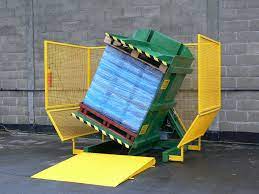
I once visited a client's food processing plant that was struggling with this exact issue. They had a pallet inverter, but it was a standard, painted steel model. The local health inspector was constantly citing them for potential contamination risks. The solution was not to get rid of automation, but to get the right automation. We worked with them to specify a machine designed for their environment. It’s not just about meeting regulations like NR-12; it's about protecting the core of your business—your product's integrity.
Physical Guarding: The First Line of Defense
Physical barriers are the simplest and most effective way to keep people safe. A pallet inverter is powerful and moves heavy loads, creating significant force and momentum. The entire operational area must be enclosed by robust safety fencing. This isn't just a suggestion; it is a fundamental requirement under Brazil's NR-12. The access gates within this fence must be fitted with safety interlock switches. If a gate is opened while the machine is running, the interlock immediately cuts power to the motors and hydraulics, bringing the machine to a safe stop. This prevents anyone from walking into a moving machine's path.
Active Safety Systems: Preventing Human Error
While physical guards are essential, active safety systems provide a second layer of protection. Light curtains are the most common. They project a grid of invisible infrared beams across the machine's access points. If an operator's hand or a forklift mast breaks any of these beams during a cycle, the machine stops instantly. This is crucial for the loading and unloading zones where people and machines interact most frequently. Other active systems include pressure-sensitive safety mats on the floor around the machine or requiring two-hand controls, which ensures the operator's hands are on the console and away from moving parts during operation. Audible and visual alarms, like a flashing light or a siren before a cycle starts, also alert everyone in the area that the machine is about to move.
Hygienic Design: Safety for Your Product
In your industries, this is just as important as operator safety. A machine that is difficult to clean is a liability. For meatpacking and pharma, I always recommend pallet inverters constructed from 304 or 316 stainless steel. These materials are corrosion-resistant and can withstand aggressive wash-down procedures with cleaning chemicals. All surfaces should be smooth, with sloped tops to prevent water from pooling. Welds must be continuous and polished to eliminate tiny crevices where bacteria can grow. Furthermore, all hydraulic power units, electrical cabinets, and motors should be fully enclosed or located outside the hygienic zone entirely. This prevents any risk of oil or other contaminants reaching your product.
| Safety Feature | Standard Industrial Spec | Pharma/Meatpacking Upgrade | Primary Benefit |
|---|---|---|---|
| Construction Material | Painted Carbon Steel | 304/316 Stainless Steel | Prevents rust, allows for wash-down, eliminates paint chips. |
| Guarding | Basic Fencing | Fully Interlocked Perimeter Fencing | Meets NR-12, physically prevents access during operation. |
| Access Points | Manual Gate | Light Curtains / Laser Scanners | Stops machine instantly if a person or object enters the zone. |
| Hydraulics/Electrics | Exposed Components | Fully Enclosed or Remotely Located | Prevents product contamination from fluid leaks. |
| Design | Standard Angles & Welds | Smooth, Polished Welds; Sloped Surfaces | Eliminates harborage points for bacteria, improves cleanability. |
How Does Integrating Pallet Inverters with Your MES/WMS Enhance Overall Plant Safety?
You see your new pallet inverter as a standalone island of automation. The operator gets a paper work order, walks to the machine, and manually enters the instructions. This process works, but it's disconnected from the rest of your plant's operations. This information silo creates risks. An operator might grab the wrong load, or choose the wrong machine cycle, potentially damaging the product. In a busy environment, the pressure to keep up can lead to missed safety checks or rushed procedures. You are leaving safety and efficiency on the table by keeping your machines isolated.
Integrating your pallet inverters with your Manufacturing Execution System (MES) or Warehouse Management System (WMS) dramatically enhances safety. It transforms the machine from an isolated tool into an intelligent part of your production workflow. This integration automates instructions, eliminating the human error of manual data entry. It can verify that the correct product is being handled and ensure the pre-approved, safe operating procedure is used every single time. It also provides real-time data and a digital audit trail, which is critical for traceability in the pharma industry and for proving compliance during safety inspections.
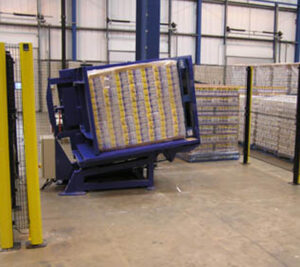
This is a topic that truly excites me because it connects my engineering background with the future of manufacturing. I’ve worked with forward-thinking leaders like Javier Morales, who understand that real progress comes from a connected system. He didn't just want a new machine; he wanted to advance his plant's digital transformation. By connecting equipment, you move from reactive problem-solving to proactive process control. Safety is no longer just a manual checklist; it becomes an automated, monitored, and integral part of your operation.
Automating Workflows to Eliminate Guesswork
When your WMS is connected to the pallet inverter, the process becomes seamless and safer. A forklift operator scans a pallet's barcode. The WMS instantly identifies the product and sends the correct instructions directly to the pallet inverter's control system. The operator doesn't have to guess which button to push or what clamping pressure to use. The system pre-loads the correct recipe. This automation eliminates one of the most common sources of problems: human error. It ensures that a heavy, durable product is handled differently than a fragile, high-value one, preventing damage and ensuring the correct, validated procedure is followed every time.
Real-Time Monitoring and Alerts
By equipping the pallet inverter with IoT sensors, you can feed real-time data back into your MES. This allows you to achieve total production visualization. A supervisor can see the machine's status from a central control room. Is it running? Is it waiting for a product? Or has a safety system been triggered? If a light curtain is tripped or an emergency stop is pressed, the MES can send an instant alert to the supervisor's phone or computer. This allows for a rapid response to any safety event. This data is also invaluable for predictive maintenance, allowing you to service the machine before a component failure creates a dangerous situation.
Creating a Digital Safety Log
In the pharmaceutical and meatpacking industries, traceability is king. Integration creates a permanent, digital record of every single pallet transfer. The log can show which product was handled, when the cycle occurred, which operator was logged in, and confirm that all safety systems were operational. This digital audit trail is invaluable for compliance with regulations like ANVISA in Brazil. If there is ever a quality control issue or a safety incident, you can instantly pull up the complete history of that specific load, providing concrete data for your investigation instead of relying on memory and paper logs.
| Area of Operation | Before Integration (Manual Process) | After Integration (Automated Process) | Direct Safety Impact |
|---|---|---|---|
| Task Assignment | Operator reads paper work order. | WMS sends digital instruction via barcode scan. | Eliminates risk of handling the wrong product. |
| Machine Setup | Operator manually selects cycle parameters. | MES pre-loads the correct "recipe" for the product. | Prevents product damage and unsafe machine operation. |
| Safety Monitoring | Relies on local alarms and visual checks. | System sends real-time alerts for safety stops to MES. | Enables faster response to incidents from supervisors. |
| Record Keeping | Manual logbooks, prone to errors and gaps. | Automatic digital log of every cycle is created. | Provides a perfect, traceable audit trail for compliance. |
Why is a Comprehensive Risk Assessment More Than Just a Box-Ticking Exercise?
Many plant managers I meet treat risk assessments as just another piece of paperwork. It's a requirement from the government or their insurance company, so they have an engineer fill out a template, check the boxes, and file it away. They believe they are compliant. But then an accident happens. An operator gets injured in a way the assessment never predicted. They quickly realize that their "box-ticking" exercise failed to identify the real-world dangers on their dynamic and busy factory floor. A generic assessment done from a desk cannot capture the complex interactions between people, machines, and the production environment.
A comprehensive risk assessment is a strategic process, not a bureaucratic task. It is the true foundation of your entire safety program. It is an active investigation to uncover not just the obvious hazards, but the hidden ones that arise from your specific workflow and environment. It involves observing the machine in action, talking to the operators who use it every day, and thinking critically about every potential "what if" scenario. When done correctly, this assessment provides the roadmap for designing effective safety procedures, developing meaningful training, and justifying investment in the right safety technology.
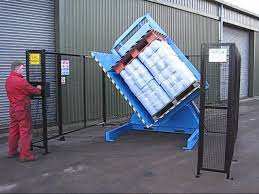
I want to share a story. I was working with a large meatpacking plant in São Paulo. They had a risk assessment for their pallet inverter that looked perfect on paper. But they were still having near-misses. I spent a day on their floor, just watching. I noticed that forklift traffic often came very close to the inverter's operating zone, much closer than the assessment assumed. The operators, under pressure, would sometimes try to "stage" the next pallet inside the safety fence to save a few seconds. These were real-world risks the paper assessment missed completely. This experience taught me that you cannot create safety from an office. You have to live it on the floor.
Moving from Theoretical to Practical Risk Analysis
The official machine manual will list potential hazards, and that's a good starting point. But you must go further. The most valuable insights come from observing the machine in its actual environment during a busy shift. How does forklift traffic flow around it? Are there blind corners? Where do operators stand when the machine is running?
Most importantly, talk to your operators. Ask them: "What is the most difficult or frustrating part of using this machine?" "Have you ever had to develop a shortcut to get the job done?" Their answers will reveal the informal, unwritten procedures and the hidden risks that a formal analysis will miss. An operator who props open a safety gate because it's "faster" is not a bad employee; they are showing you a flaw in your process design that needs to be fixed.
The Role of the Supplier in Risk Assessment
A good equipment supplier is more than just a seller; they are a partner in safety. At SHJLPACK, our mission is to be a total solution provider. This means our responsibility doesn't end when the machine is delivered. We bring experience from hundreds of different installations in various industries. We have seen what works and what doesn't. We can help you identify potential risks specific to your layout or product that you might not recognize. A responsible supplier should actively participate in your initial risk assessment, bringing their deep machine knowledge to complement your deep process knowledge. This partnership is crucial for creating a truly robust safety plan.
Continuous Improvement: The Living Risk Assessment
A risk assessment is not a static document. It must be a living part of your continuous improvement process. You must review and update it regularly. When should you review it? At least annually. But also, after any change to the process, after any modification to the machine, and most importantly, after any accident or near-miss. Each incident is a lesson. Use it to strengthen your assessment and your safety procedures. If you have integrated your pallet inverter with your MES, you can use the data from the system to inform your assessment. Are you seeing frequent emergency stops at a certain time of day? This data points to a potential problem that needs investigation.
| Hazard Category | Specific Example for Pallet Inverter | Potential Consequence | Mitigation Strategy |
|---|---|---|---|
| Crushing/Entrapment | Operator reaching into the clamping area. | Severe injury, amputation. | Interlocked guarding, light curtains, proper LOTO procedures. |
| Struck By | Forklift colliding with the machine. | Equipment damage, operator injury. | Clear floor markings, physical barriers, traffic management plan. |
| Ergonomic | Poor control panel placement. | Repetitive strain injury for operator. | Ergonomic design review, adjustable control stands. |
| Process Error | Using wrong clamping pressure for a fragile load. | Product damage, pallet instability. | Integration with WMS/MES for automated recipe selection. |
| Environmental | Hydraulic fluid leak in a food-grade area. | Product contamination, costly recalls. | Use of food-grade hydraulic oil, enclosed power units. |
Conclusion
Ultimately, pallet inverter safety is a system. It combines the right machine, well-trained people, and smart, integrated processes. This is a continuous commitment, not just a one-time purchase.





